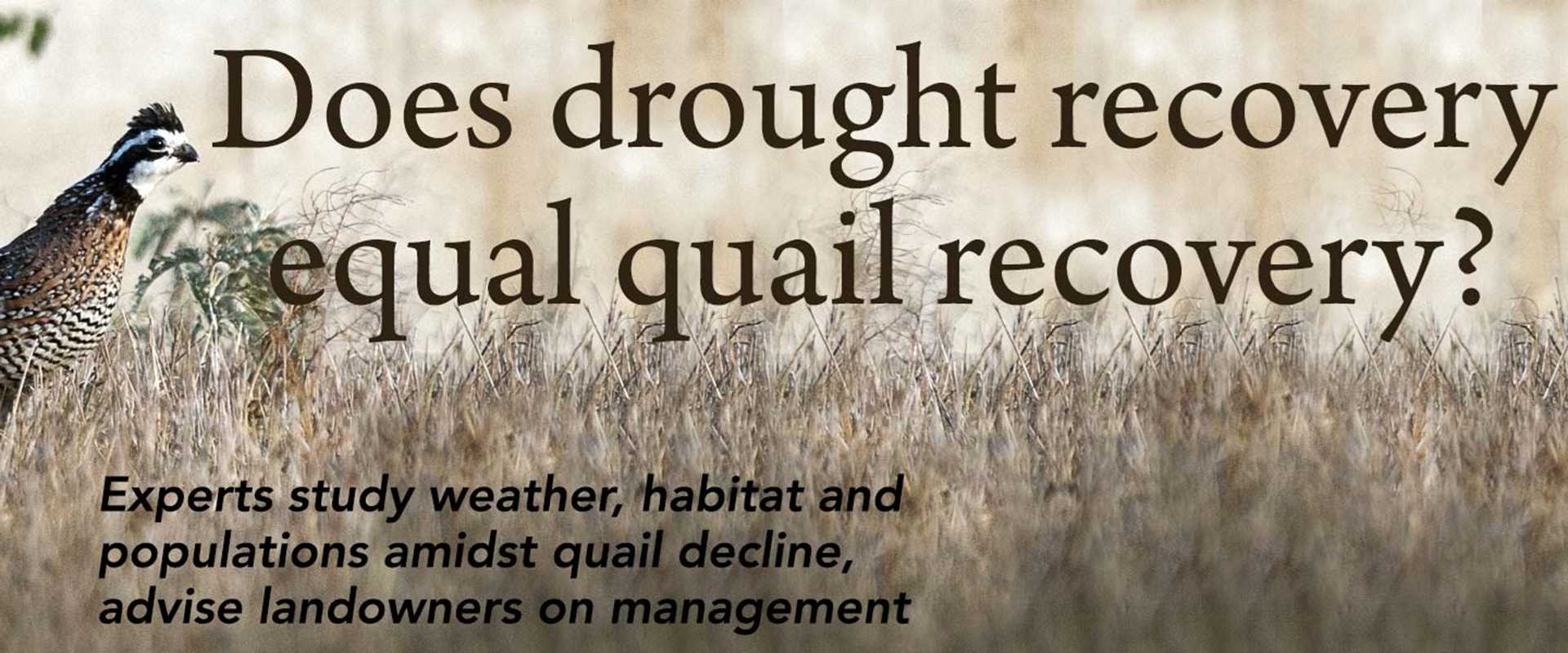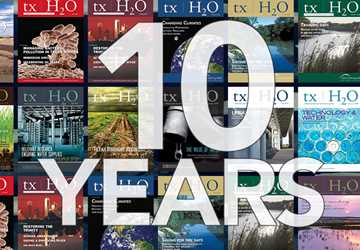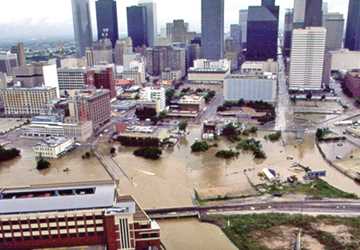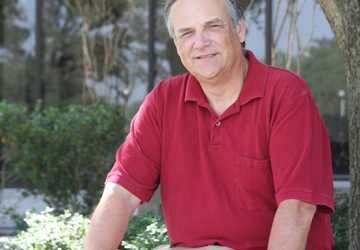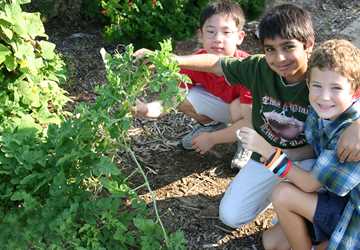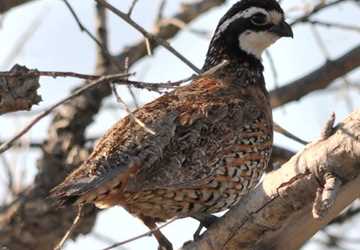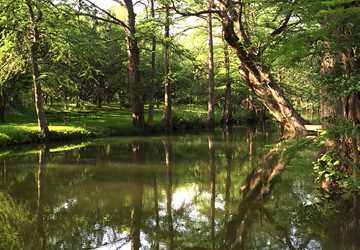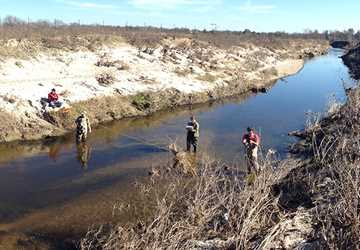By Leslie Lee
Megabrood: that’s a term most Texas quail enthusiasts haven’t used in about a decade. But this year, it made a comeback.
Rains that soothed and flooded landscapes across the state in May and June 2015 resulted in near-optimum conditions for quail in many regions. Good rainfall, habitat conditions and survival rates resulted in many ranchers spotting large coveys of quail, or megabroods. Some hens hatched nests of up to 20 chicks and many hens “double- clutched,” or hatched more than one brood, experts said.
“If we have rain, we’ll have quail, and if we don’t, we won’t,” is an oft-repeated adage among West Texas ranchers, said Dr. Dale Rollins, executive director of the Rolling Plains Quail Research Ranch (RPQRR). The Texas Parks and Wildlife Department’s (TPWD) annual roadside quail counts were published in September and mostly agreed, showing increased populations from last year in most ecoregions. The “boom” was most pronounced in West Texas, Rollins said.
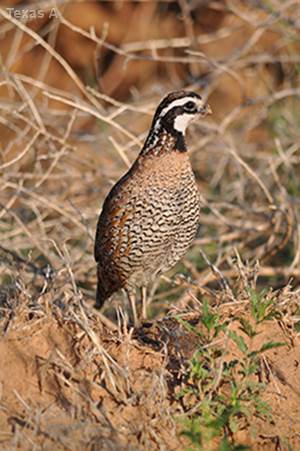
Four species of quail are historically found in Texas: bobwhite, which are the most popular and are abundant throughout much of the state; scaled or blue, usually found in the western half of the state; Gambel’s, much less abundant and found only in the western parts of the Trans-Pecos region; and also less abundant, Montezuma, which range in the Trans-Pecos and the western Edwards Plateau.
Despite decent roadside counts and ranchers’ optimistic reports in 2015, quail are still in the midst of a long-term decline that won’t be fixed by one wet spring, experts said.
The North American Breeding Bird Survey, a U.S. Geological Survey project, has shown a decline in Texas bobwhite breeding numbers at a rate of 3.9 percent per year from 1970 to 2009, according to TPWD.
“In Aldo Leopold’s day, experts were saying quail had been declining for 50 years,” said wildlife biologist Brian Pierce, an associate director of the Texas A&M Natural Resources Institute (NRI). “So that means this decline has been happening for more than 100 years; this is nothing new.”
As drought conditions inevitably rise and ebb in Texas, quail hunters and enthusiasts continue to hope for and work toward conservation of the species, and wildlife researchers study all the factors involved in the storied birds’ survival.
When the rains come
Rain’s positive effects on quail are multifaceted.
First, grassland prairies that are healthy and tall enough to provide the 6-inch-tall bird with sufficient cover from both terrestrial and aerial predators are essential to quail. Second, the birds require habitats with numerous clumps of native grasses to nest in because the shelter provides effective cover from predators and the climate needed to brood a nest. Third, quail chicks need a healthy crop of insects to eat to get the protein they need for rapid development.
In Aldo Leopold’s day, experts were saying quail had been declining for 50 years. So that means this decline has been happening for more than 100 years; this is nothing new.
Additionally, because rain benefits the entire grassland ecosystem, other species, such as rodents, also abound following rains. This provides alternative prey for quail predators, taking some pressure off quail. Lastly, when all these factors are present, the numbers of nests per hen, chicks hatched per nest and surviving chicks are all higher, resulting in an increased base population leading into winter.
“Quail reproduce in the summer, and if conditions are favorable, then they can have multiple clutches of chicks in a year, and that’s when you see the population renewing itself,” said Dr. Brad Dabbert, the Burnett Foundation Endowed Professor of Quail Ecology at Texas Tech University and a leader of the Quail-Tech Alliance.
Quail-Tech is a partnership between Texas Tech University and privately owned ranches in a 38-county, 22-million acre area in west central and northwest Texas. The alliance began in 2010 and currently works with 27 partner ranches, conducting both research and outreach on the properties.
“This (alliance) has given us a great Rolling Plains-wide picture of what’s happening, to a certain extent, with quail populations,” Dabbert said.
According to the alliance’s research, rainfall and bobwhite population numbers in the Rolling Plains share a significant positive correlation. They also found that rainfall is a limiting factor for bobwhites, meaning that their populations can only grow so much during drought, regardless of other factors. Research on their ranches found that lack of food and cover during drought reduces the number of nesting attempts by as much as 80 percent while also decreasing the survival of chicks produced by the few nests that are attempted, he said.
Rollins said that sufficient rain is at least half of the piece of the puzzle for quail population growth, but management is also important. “Rain is definitely the ace in the deck,” he said. After the wet spring of 2015, he estimated that 40 percent of the coveys seen on the research ranch in the summer were megabroods.
He and his staff study the ranch’s quail populations as well as the effects of various land management practices. The nonprofit ranch is a 4,700-acre property in Fisher County that works in partnership with Texas A&M AgriLife Extension Service and Texas A&M AgriLife Research.
The $2 million question
Although the population had already been declining for decades, both bobwhite and blue (or scaled) quail populations substantially decreased in Texas in the mid-1990s. In most of the state’s ecoregions, the birds have followed a “boom and bust” pattern over the years, with lower counts mostly coming in drier years. But, since the 1990s, counts in the “boom” years have mostly been below the long-term averages, Rollins said.
In the Rolling Plains, bobwhite quail numbers took a nosedive in 1994 and have never fully recovered, he said. Even during wetter years, veteran West Texas quail hunters forecast the season cautiously and predict a good quail year only “if the wheels don’t fall off,” Rollins said.
So, what’s causing the decline? Explanations range from obvious ecological explanations, such as habitat loss, urban and suburban development and degradation of native grasslands, to fire ants or disease.
To help solve the mystery, the Texas Legislature passed a biennial exceptional item for fiscal years 2014-2015 to support integrated approaches by AgriLife Extension, with AgriLife Research, to use the Texas A&M University System’s resources to address the decline. The state-designated $2 million fund established the Reversing the Quail Decline Initiative, for which Rollins serves as the state coordinator. The funding was also renewed for the 2016-2017 biennium.
In September the initiative hosted a Statewide Quail Symposium, the first event of its kind since 1999, bringing together researchers, educators and experts from across the state, to discuss relevant topics, including quail decline.
The decline, however, may not be easily fixed, Pierce said.
“There are boom and bust cycles in weather, but quail populations keep declining steadily over the decades — so we know the cause isn’t the weather,” Pierce said. “The cause of the decline is the one thing we don’t want to admit: it’s us.”
Pierce helped conduct a recent study funded by the initiative that found habitat loss due to land use change to be the greatest indicator of future quail population declines. Increases in land values and human population density most closely correlated with decreases in quail counts. The research was conducted by Pierce, IRNR Director Dr. Roel Lopez, IRNR Research Scientist Israel Parker and Texas A&M Department of Wildlife and Fisheries Sciences Regent’s Professor Dr. Nova Silvy, and compared economic, agricultural and land use metrics among ecoregions in Texas from 1993 to 2012.
There are boom and bust cycles in weather, but quail populations keep declining steadily over the decades — so we know the cause isn’t the weather. The cause of the decline is the one thing we don’t want to admit: it’s us.
As human population density in Texas continues to increase, quail population densities will continue to decrease, Pierce said.
Landowners can help birds fight back
Although the quail decline is indisputable, there are management practices that landowners can adopt to help quail survive, the experts said.
“We can’t control the weather or the climate, but we can control how we manage our land,” Pierce said. Pierce said an IRNR research study conducted from 2011 to 2013 found that ranches in the Rolling Plains, all experiencing the same drought conditions, saw drastically different quail numbers depending on how they managed the land. Cattle ranchers that managed grazing conservatively saw success in their quail numbers, while ranchers who made decisions unfavorable to quail habitat saw low quail numbers.
“Conservative grazing and moderate stocking rates are key,” Rollins said. “A rancher with bird dogs is a quail’s best friend. We think that good stewards have the advantage if they maintain nesting cover. Quail like to nest in last year’s grass, what’s called residual grass cover. So, if you’ve grazed it all to the ground, your quail are at a disadvantage.”
“Managing land for both cattle and quail can be very compatible, and grazing management and quail habitat can go hand in hand,” Dabbert said.
We think that good stewards have the advantage if they maintain nesting cover.
He said that proper management during drought or low-rain years will also result in landscapes and quail populations that bounce back quicker when rains do eventually come.
“You hear folks say ‘if we have rain, we’ll have quail, and if we don’t have rain, we won’t have quail,’ and to a certain extent that’s true,” he said. “But if you don’t manage your populations and land properly in the meantime, you’re going to have to wait a lot longer after these tremendous rain events to see the benefits to your quail.”
Quail-Tech recommends supplemental feeding as one way to help quail populations during dry years. Broadcasting supplemental feed, which involves distributing it not onto roads or short grass but out into the tall grasslands where quail can safely find it without leaving cover, is a technique that they have found to be effective in sustaining base quail populations in the Rolling Plains, Dabbert said.
“So even though we have to work within the context of rainfall, there are management factors that we can do that will keep our higher populations higher and our lower populations not as low during those drought years,” he said.
RPQRR research has shown that maintaining clump- grass nest-sites throughout a landscape increases quail survival rates, Rollins said.
“Quail like to nest in grass, and they don’t care if it’s little bluestem, or silver bluestem, or tobosagrass — there are several species that will fit the bill,” he said. “But you’ve got to have nesting cover across the landscape. We recommend landowners have at least 300 suitable bunchgrasses per acre. You don’t want the clump to stick out among the landscape. Nesting cover across the landscape diffuses predators’ search-efficiency.
So even though we have to work within the context of rainfall, there are management factors that we can do that will keep our higher populations higher and our lower populations not as low during those drought years.
“Here in the Rolling Plains, we also get a lot of broomweed in wet years, which is one of my favorite plants for quail,” Rollins said. “Nothing insulates a quail crop better than a canopy of broomweed. To a quail it’s like a covered shopping mall.”
Land management benefits water and quail
What’s good for quail is often good for both the water and land, the experts said. Many of the same land conservation practices that benefit watersheds’ water quality, other wildlife species and soil conservation also benefit quail.
“You don’t have to be carrying a shotgun and following bird dogs to appreciate quail and the systems that produce them,” Rollins said.
Managing grazing, building spreader dams along ranch roads to reduce runoff and create plant and wildlife oases, maintaining native grasses and conducting prescribed burns are some of the recommended techniques that help quail and also provide ecosystem-wide benefits.
“When the grassland is healthy, quail are healthy,” Pierce said.
“Healthy landscapes benefit wildlife, landowners and the public. Because approximately 97 percent of all land in Texas is privately owned, we should focus more of our efforts toward helping landowners understand and execute good land management practices.”

